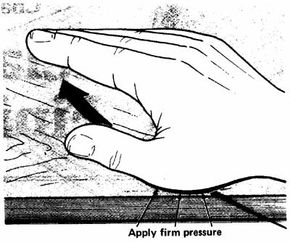How to Apply Oil Finish to Furniture
An oil finish is designed to protect wood and bring out its natural beauty, which makes it a popular finish for revitalizing wood furniture.
Oil is penetrating and durable; it is water- and alcohol-resistant, and gives wooden furniture an attractive natural sheen and texture. Hand-rubbed oil finishes can be beautiful, but only if they're properly applied. Danish and tung oil finishes are far superior to the traditional linseed oil; linseed oil is sticky and hard to apply. Any oil finish must be reapplied periodically, but Danish and tung oil require far less reapplication than linseed oil. It's important to choose the right oil finish for your furniture project.
Advertisement
Types of Oil Finishes
Modern oil finishes -- Danish oil, a synthetic, and natural tung-oil sealers -- are penetrating finishes, but they should be applied periodically. Tung-oil finishes are available in semigloss and high-gloss forms, and also in several stain colors. Danish oil usually has a satin finish.
A linseed oil finish is rich and glossy, but many applications are required for a good finish. The classic linseed oil finish is a mixture of equal parts of boiled linseed oil and turpentine. There are many variations on the linseed oil finish. One of the best of them is the Mary Roalman finish, which consists of equal parts of boiled linseed oil, turpentine, and natural varnish. Mix the linseed oil finishes several days before you use them. For most pieces, a pint of each ingredient is plenty.
Special Requirements
Oil finishes can be applied directly over prepared bare or stained wood. Only water or non-grain-raising (NGR) stains should be used; oil-base stains interfere with the penetration of the oil. Stain-color tung-oil sealers stain and finish in one operation. Very open-grained woods should be filled before an oil finish is applied; any paste filler is compatible. No sealing is required.
Oil Application Techniques
Wood to be finished with oil must be thoroughly sanded to even out the open pores to create a smooth surface. No sealing is necessary. Before applying the finish, clean the piece of furniture thoroughly with a tack cloth.
Apply the oil -- Danish oil, tung-oil sealer, linseed oil, or the Mary Roalman mixture -- with a clean cheesecloth pad, using a circular or figure-eight motion to work it into the wood. Apply oil evenly and liberally, until the wood has stopped absorbing it; work on one surface at a time. Apply oil until the wood is evenly oiled and the surface has stopped absorbing.
Rub the oil firmly into the wood with the heels of your hands, working along the grain. Continue rubbing for about 15 minutes; as you rub, the warmth you generate will help the oil penetrate into the wood. Danish oil and tung oil may not require such extensive rubbing; follow the manufacturer's specific instructions. Finally, after thoroughly rubbing all surfaces, wipe the piece of furniture clean with a clean cloth. You must remove all excess oil; there should be no oil -- or, if you're using a linseed finish, only a very thin film of oil -- on the surface of the wood.
Drying and Recoating
Danish oil and tung oil dry more quickly than linseed oil. In most cases, they can be reapplied after 12 to 24 hours; follow the manufacturer's specific instructions. Linseed-oil finishes must dry for about a week; drying takes longer in very humid weather. Do not recoat a linseed-oil finish until it's completely dry, with no trace of stickiness.
When the first coat of oil is completely dry, apply further coats until the finish is rich and hard. Danish oil and tung-oil sealers may require only one additional application, but linseed-oil finishes should be given 10 to 20 additional coats. Rub each additional coat of oil thoroughly into the wood, as above, and then wipe off all excess oil. Let each coat of oil dry thoroughly before applying the next -- at least one week between the first several coats, longer between later coats. If the oil isn't completely dry between coats, the finished surface will be sticky.
Sometimes a furniture project isn't a refinishing job. Working with unfinished furniture has its own quirks. Find out more on the next page.
